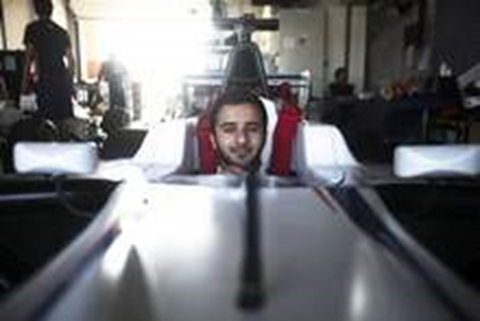A surge in car sales across most Arabian Gulf countries underlines the momentum behind the region’s consumer spending boom, and sales are likely to continue rising strongly for at least a few years, industry executives say.
Car sales are an important indicator of business activity in a region where official macroeconomic data, such as GDP, is often unreliable and released with delays of many months.
Analysts estimate GDP in the richest Gulf Arab economies – Saudi Arabia, the UAE, Kuwait and Qatar – is now growing at annual rates of around 3 to 5 per cent, fuelled by high oil prices and heavy government spending.
“Sales are 17 per cent up so far [this year]. It will be a good strong end of the year as well,” said Trevor Hill, Audi’s managing director for the Middle East.
Audi, the luxury arm of Germany’s Volkswagen, sold 9,155 cars in the Middle East last year; the UAE accounted for more than 40 per cent.
In January, the company predicted that 2013 sales in the region would rise 12 to 15 per cent.
Official industry-wide numbers are not available, but because of consumers’ high average incomes and ultra-low, subsidized petrol prices, car sales in the Gulf are skewed towards upmarket brands and large sport utility vehicles (SUVs), in comparison with Europe and many Asian markets.
Britain’s Jaguar Land Rover (JLR), a luxury car maker that India’s Tata Motors owns, saw a 38 per cent year-on-year jump in Middle Eastern and North African sales for the first nine months of this year, with the UAE and Saudi Arabia its top two markets.
“The economy has been very strong and a lot of the markets in the Middle East are doing very well generally,” said Robin Colgan, JLR’s managing director for the region.
One reason for strong consumer spending growth in some Gulf economies, particularly the UAE and Kuwait, is a recovery of real estate and equity markets from the global financial crisis; this has made customers feel richer.
Dubai’s foreign trade in motor vehicles rose 18 per cent to Dh32 billion in the first half of this year, with Japan accounting for a quarter of the total followed by the United States, according to the emirate’s customs office.
That number includes re-exports as well as imports; the six GCC countries do not produce passenger cars of their own, and Dubai imports many cars that are subsequently shipped elsewhere in the Middle East and Asia.
Car makers are keen to expand sales in the Gulf partly because they face overcapacity and price pressures in Europe, which has been hit by the euro zone’s debt crisis.
Opel, a German unit of US car maker General Motors, exhibited at last week’s Dubai motor show for the first time in 15 years, after entering the UAE market in February.
“We are back now after 15 years and clearly identified the Middle East as a growth region,” said Lutz Jäckel, the director of sales, marketing and after-sales at Opel International Operations.
“We expect in the region average growth of the car market of 10 to 15 per cent, and we want to participate.”
Rival US car maker Ford Motor said on Tuesday it planned to launch 17 new or refreshed Ford and Lincoln vehicles in the Middle East over the next two years to accelerate growth in the region.
“In the Middle East over the last four years it is growing by 60 per cent. Our forecast is that by 2020, the industry could reach about 5.5 million units, so that is another 40 per cent growth on top,” said Stephen Odell, the president of Ford Europe, Middle East and Africa.
New car sales in the UAE are likely to surge to 380,000 units this year, up 23 per cent from last year and above the 2008 peak before the global credit crunch, according to the Middle East Automotive Council, an informal body of car makers in the Gulf.



